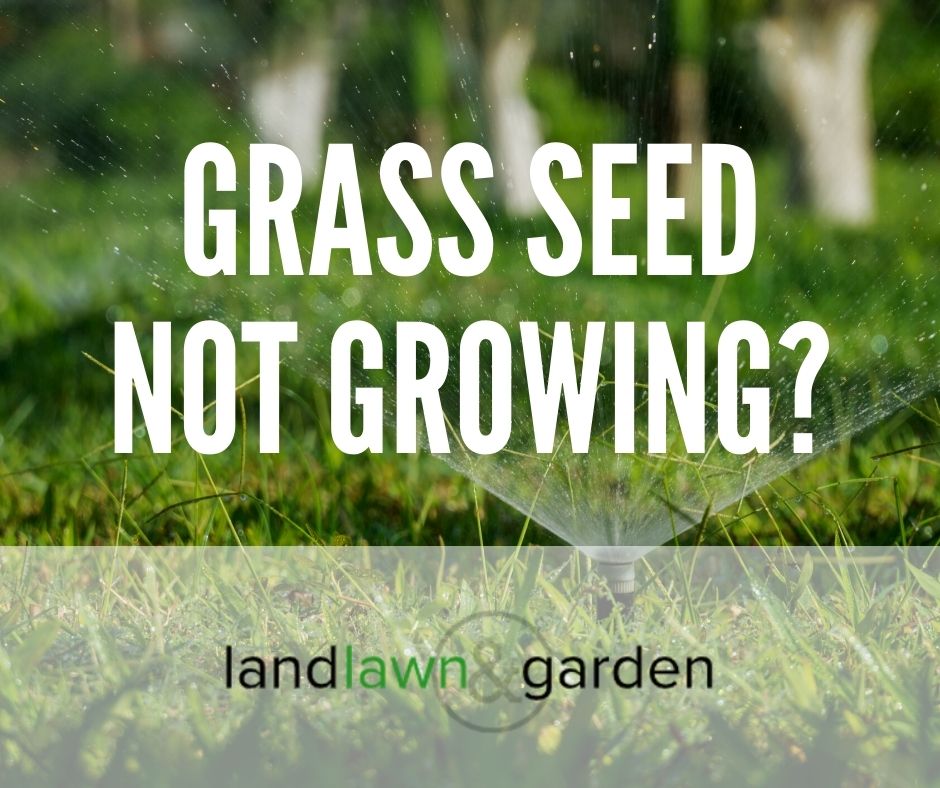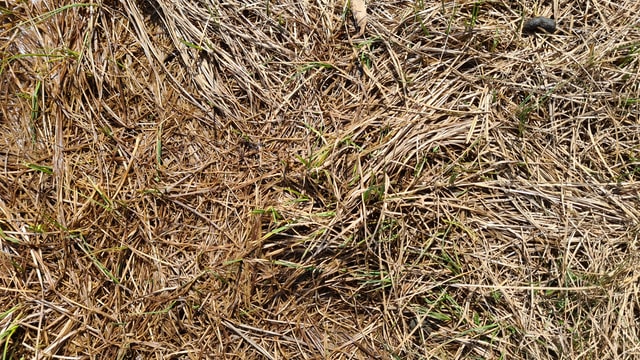While many gardeners are tempted to grow the best shrubs and to plant as many perennial flowers as they can, some of us are just trying to do our best to maintain a healthy lawn. Unfortunately, when seeding your lawn, getting the grass to grow properly can be a challenge. Let’s face it; it’s a nuisance to have to reseed your lawn when the first time fails. Luckily enough, there are budget-friendly ways to prevent reseeding your lawn.
Straw, compost, and mulch are excellent covers for grass seed, and they are all budget-friendly too. Grass seed covers protect grass seeds from birds, excessive sunlight, and being washed or blown away. Seed covers also provide heat and moisture needed by grass seeds to germinate and thrive.
Instead of potentially creating double the work, lets rather dig into the best thing to cover grass seed with, guaranteeing healthy growing grass!
Quick Links
Should I Cover Grass Seed?
When seeding a lawn, getting the grass to germinate and grow can be a challenge.
If you are reseeding an existing lawn, you generally do not have to worry about covering your grass seed because they already get protection from the existing grass blades. However, without existing grass, the new grass seeds may not be able to retain enough moisture. New-planted grass seed typically needs seed-to-soil contact, moisture, and heat to encourage germination.
Covering the seeds prevents them from drying out. The cover also helps lock in moisture and retain heat, giving the grass seeds a better environment to germinate successfully. These covers also prevent the seeds from being blown or washed away.
However, it is essential to note that your grass seeds need to be covered with a suitable material, or you may end up causing more harm than good.
We will discuss several effective and budget-friendly materials to cover your grass seed.
Straw
Straw is a great budget-friendly cover for newly planted grass seed. As a result, straw is one of the most common materials used. However, it is important to choose a variety of straw that is relatively free of seeds that will produce weeds on your lawn.
Effective straw options are:
- Oat straw
- Barley straw
- Wheat straw
Using pine straw is an alternative option, but it can become problematic as many pine straws contain terpenes (a chemical that potentially affects the growth of nearby plants). Instead, I recommend using an aged variety of pine straw where the needles are already brown and in which the terpenes have already evaporated.
If the pine needles lack their characteristic aroma, they are most likely well-aged and ready to use.
Benefits of Covering Grass Seed with Straw
Covering your grass seed is not entirely necessary, but it can improve your grass seed germination rate. Here are six benefits of using straw as a grass seed cover:
- Straw prevents birds from feeding on the grass seed
- Straw covers the grass seed from excess sunlight.
- Straw helps to retain moisture.
- Straw helps to retain heat.
- Straw prevents the grass seed from being washed away by rain or water
- Straw eventually decomposes, adding organic matter and nutrients to the soil.
How Much Straw Should I Use To Cover My Grass Seed?
Unlike newly planted shrubs that typically need a thick layer of mulching, grass seed does not require as much coverage. A light covering of straw over your grass seeds is all you need. Cover your grass seeds with no more than ½ inch of straw.
A rule of thumb: You need be able to see approximately half of the soil and seeds through the layer of straw.
A thick layer of straw will inhibit your seed growth by preventing sunlight from reaching the soil. In addition, a thick layer of straw will retain too much moisture, creating a perfect habitat for fungi. Fungi will outgrow your grass seeds, further inhibiting seedling development.
Compost
For an inexpensive and green option, compost is an ideal covering for grass seeds. However, they only used well-aged compost. If the organic particles haven’t entirely decomposed, it may cause the grass seeds to rot.
The compost should be finely screened. Clumped compost will suffocate the grass seeds. Instead, run your compost through a sifting screen before applying it to the grass seeds to separate the mature compost and the material that hasn’t decomposed yet.
A screened compost layer will allow more air to pass through the compost layer, providing the seeds with sunlight and oxygen for rapid germination.
Effective composts to cover grass seed:
- Leaf compost
- Mushroom compost
- Compost made from yard waste and/or food scraps
Benefits of Covering Grass Seed with Compost
Compost boosts the organic matter in the soil, increasing your soil’s physical, biological, and chemical properties.
Compost provides the following six benefits:
- Increased the soil’s aeration and drainage
- Retains moisture
- Improved water infiltration
- Better nutrient-holding capacity
- Improves soil fertility which leads to increased nutrient availability for the grass seed
- Provides an environment that will encourage a healthy lawn.
How Much Compost Should I Use to Cover My Grass Seed?
Compost can either be added to the soil before planting your seeds or mixed with the grass seeds when planting them. However, if you are covering the seeds after you plant them, spread approximately ¼ inch of compost over your grass seed. A thin layer is enough to provide adequate protection and covering without inhibiting germination.
Mulch
Mulching is another budget-friendly and effective covering for new grass seeds. Mulch helps to lock in moisture and facilitates healthy soil once decomposed.
Effective mulching options:
- Peat moss
- Sawdust
- Leaves
- Shredded newspaper

Benefits of Covering Grass Seed with Mulch
Peat moss is not necessary to cover grass seed, but it can effectively facilitate faster and more effective grass seed germination.
Mulch provides the following six benefits:
- Biodegradable
- Adds organic matter to the soil
- Mulch creates a better growing environment
- Retains moisture for adequate germination
- Protects your grass seeds from birds
- Safeguards the seeds from rain and win
How to Apply Mulch as a Grass Seed Cover?
Peat Moss
Peat moss is a growing medium used to enrich poor-quality soil by retaining moisture and oxygen. Peat moss can roughly hold up to 20 times its weight in moisture without becoming too waterlogged.
While peat moss is excellent for holding water and improving your soil, it is also an effective organic mulching material which further enriches soil with nutrients once it has decomposed.
For peat moss to effectively facilitate grass seed germination, it has to be applied correctly. Apply approximately 1/8 inch of peat moss over your seeded area.
Sufficiently hand-loosen the peat moss from its typical, dense state before applying it to your newly-seeded lawn.
If you apply peat moss to the grass seeds without loosening it, any water you apply to the ground will immediately be soaked up by the mulch. However, by loosening the peat moss into an airy layout across the seeds, water can easily move between the fibers to the soil below.
Sawdust
Sawdust is another excellent alternative for covering grass seed. Apply a thin, ¼ inch layer of sawdust onto your grass seeds for a mulch that will biodegrade over time.
Ensure that the sawdust is applied very lightly and that there aren’t any clumps of sawdust laying on the grass seed. Again, a thin layer will avoid triggering a matting effect.
A mat effect is where the dust particles combine and form a barrier for evaporation and drainage. Matting will discourage seed germination and seedling growth.
Finally, sawdust mulch tends to leech nitrogen from the soil. Therefore, pair it with a regular fertilizer application schedule.
Leaves
Leaves are free organic matter and should be used to promote a thriving garden and lawn. In addition, mulching with leaves is highly cost-effective and has been found to benefit the quality and color of the turf.
Apply approximately 2-3 inches of leaf mulch to your grass seed. Applying a thicker layer will encourage fungal growth, and it will hinder your seed growth.
In general, about half of your seeded area should be visible, while the other half only shows mulch.
Wrapping up
So, to conclude, if you are reseeding an existing lawn, you do not have to worry too much about covering your grass seed because they already have protection from the current grass blades.
However, it’s advisable to use a cover to facilitate an optimal growing environment for your grass seed when growing a new lawn.
Options including straw, compost, and mulch are all budget-friendly and easily accessible. These covers will protect your grass seeds from birds, excessive sunlight, and being washed or blown away. Grass seed covers also provide heat and moisture needed by grass seed to germinate and thrive.

Worried your grass seed won’t grow?
Click the button below to read our article on some of the most common reasons your grass seed will fail and what you can do to prevent them. This is a MUST READ for first time grass seed users.

Kevin is the owner of Land Lawn & Garden. In addition to taking a lot of pride in his lawn at home, he also helps manage the family land. You can find more about him here.


